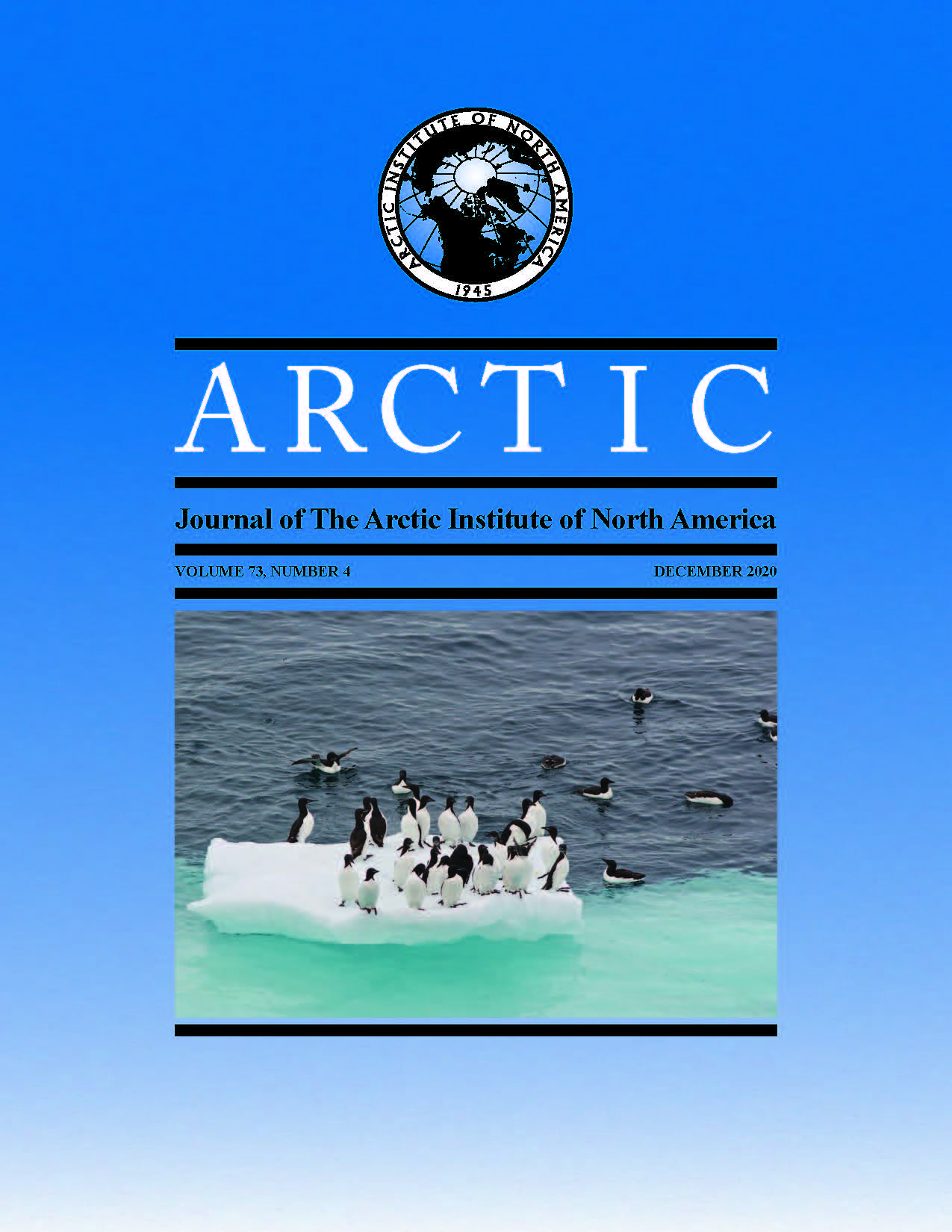Effects of Fish Populations on Pacific Loon (Gavia pacifica) and Yellow-billed Loon (G. adamsii) Lake Occupancy and Chick Production in Northern Alaska
DOI:
https://doi.org/10.14430/arctic71533Ключевые слова:
Arctic Coastal Plain; Arctic lakes; bottom-up process; fish community; food web; Gavia adamsii; Gavia pacifica; lake habitat; occupancy modeling; territory occupancyАннотация
Predator populations are vulnerable to changes in prey distribution or availability. With warming temperatures, lake ecosystems in the Arctic are predicted to change in terms of hydrologic flow, water levels, and connectivity with other lakes. We surveyed lakes in northern Alaska to understand how shifts in the distribution or availability of fish may affect the occupancy and breeding success of Pacific (Gavia pacifica) and Yellow-billed Loons (G. adamsii). We then modeled the influence of the presence and abundance of five fish species and the physical characteristics of lakes (e.g., hydrologic connectivity) on loon lake occupancy and chick production. The presence of Alaska blackfish (Dallia pectoralis) had a positive influence on Pacific Loon occupancy and chick production, which suggests that small-bodied fish species provide important prey for loon chicks. No characteristics of fish species abundance affected Yellow-billed Loon lake occupancy. Instead, Yellow-billed Loon occupancy was influenced by the physical characteristics of lakes that contribute to persistent fish populations, such as the size of the lake and the proportion of the lake that remained unfrozen over winter. Neither of these variables, however, influenced chick production. The probability of an unoccupied territory becoming occupied in a subsequent year by Yellow-billed Loons was low, and no loon chicks were successfully raised in territories that were previously unoccupied. In contrast, unoccupied territories had a much higher probability of becoming occupied by Pacific Loons, which suggests that Yellow-billed Loons have strict habitat requirements and suitable breeding lakes may be limited. Territories that were occupied had high probabilities of remaining occupied for both loon species.
Скачивания
Загрузки
Опубликован
Выпуск
Раздел
Лицензия
Copyright (c) 2020 ARCTIC

Это произведение доступно по лицензии Creative Commons «Attribution» («Атрибуция») 4.0 Всемирная.


